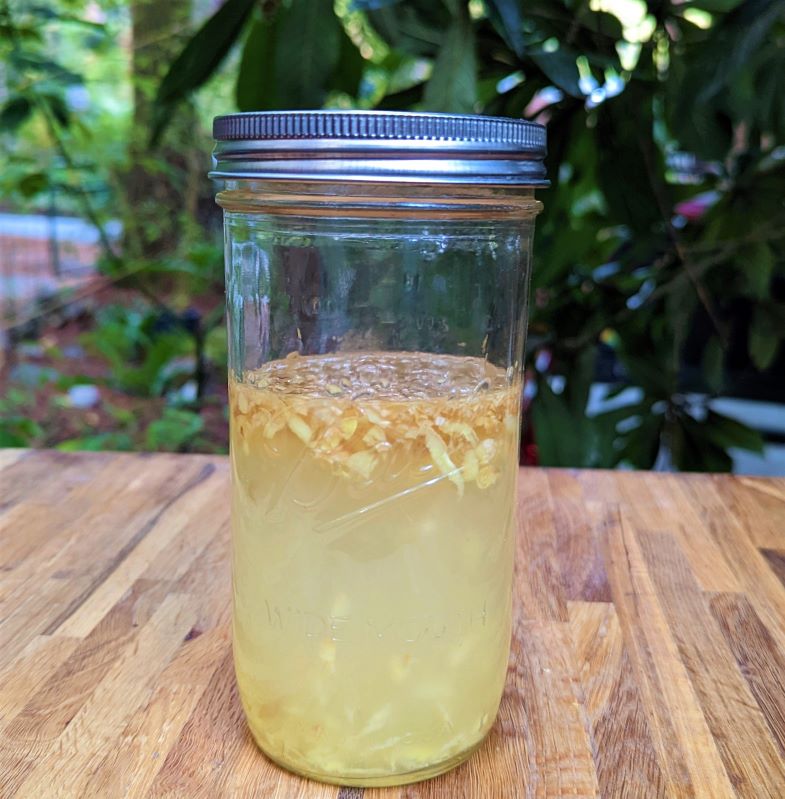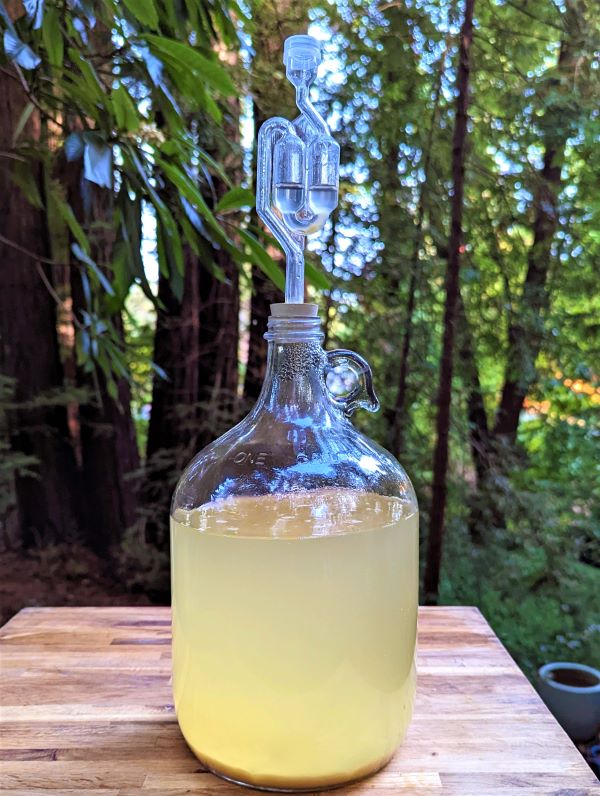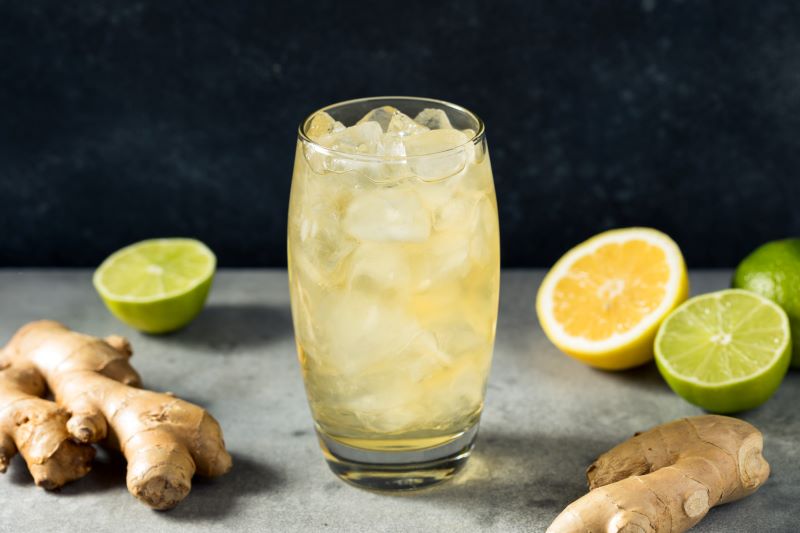Ginger Beer | Felton Fermenter
By Tom Andersen
When I was a young boy my family would load up the station wagon and head to my grandparents’ farm in Viborg, a small town in rural South Dakota. My grandmother made just about everything from scratch, including soda pop. Root beer was the favorite but a pretty involved process, while ginger ale was a close second and much simpler. I supercharge my ginger ale by letting it fully ferment into ginger beer. Ever so slightly alcoholic, maybe just a few percent alcohol, it most definitely has a fizzy “pop.”
Ginger beer requires only four easy steps — first making a starter called a “bug,” second making a ginger tea, third fermenting the tea, and finally bottling.
Ginger Bug

A ginger bug is like a sourdough starter. In a quart jar add:
2 cups non-chlorinated water
2 tbsp grated ginger with the skins
2 tbsp sugar
Shake it all up, then place in a warm spot with the lid on loosely. The following day, and the next couple of days, add another tbsp each of grated ginger and sugar. When the concoction is fizzy, it’s ready to go.
Ginger Tea
Start with a gallon of non-chlorinated water. I add one cup of grated ginger and three cups of sugar. Add more ginger if you like your ginger beer more on the “snappy” side. Boil for ten minutes, then let cool to about 90 to 98 degrees. Add one cup of lemon juice and one cup of your fizzy bug.
Sanitizing
From this point on, everything must be sanitized. I use a repurposed one-gallon wine jug and a fermentation lock. Store-bought sanitizer is expensive. Here’s a cheap, no-rinse formula. Fill your gallon jug with water, add one tsp unscented bleach. Stir that up well, then add one tsp vinegar. Never mix anything directly into the bleach, only into the water bleach mixture. Soak or saturate everything that will touch the ginger tea for one minute, then let it drain.
Fermenting

Strain the ginger tea into the sanitized gallon jug, fill the fermentation lock, and place the jug in a nice warm room. Let it go until the bubbling stops. And now it’s time to bottle. Since the yeast in the up ginger bug ate all the sugar, we have to add a tiny bit more. Fill a one-pint jar with water and add no more than one tbsp sugar. Make sure it’s all dissolved. Carefully pour the now beer into a sanitized pot keeping the sediment separate. Add the one-pint sugar mixture.
Bottling
As for the bottles, reused sanitized plastic bottles are the safest. Just a little squeeze will tell you when to refrigerate and drink. Glass bail-top bottles can be burped after a couple of days. Capped bottles are anyone’s guess. I give it a couple days of carbonating, then refrigerate.
Remember to sanitize everything. Make sure you taste a little so you can adjust the ginger and sugar the next time around.
When the plastic bottles are firm from carbonation, refrigerate, then drink. If you plan on using glass bottles, fill one plastic bottle as a control.
You can use the ginger bug to make a variety of flavored sodas because it’s just basically a yeast with a zip of ginger. Some options would be to follow the steps above but substitute a berry or apple juice in place of the ginger tea.
Serve over ice with a squeeze of lemon or line. Or straight out of the bottle!
Tom Andersen is a writer, cook, martial arts instructor and lifelong Felton resident. He explores the world of fermented food and drinks in print and online at FB @FeltonFementer.
Photos by Tom Andersen
The San Lorenzo Valley Post is your essential guide to life in the Santa Cruz Mountains. We're dedicated to delivering the latest news, events, and stories that matter to our community. From local government to schools, from environmental issues to the arts, we're committed to providing comprehensive and unbiased coverage. We believe in the power of community journalism and strive to be a platform for diverse voices.





